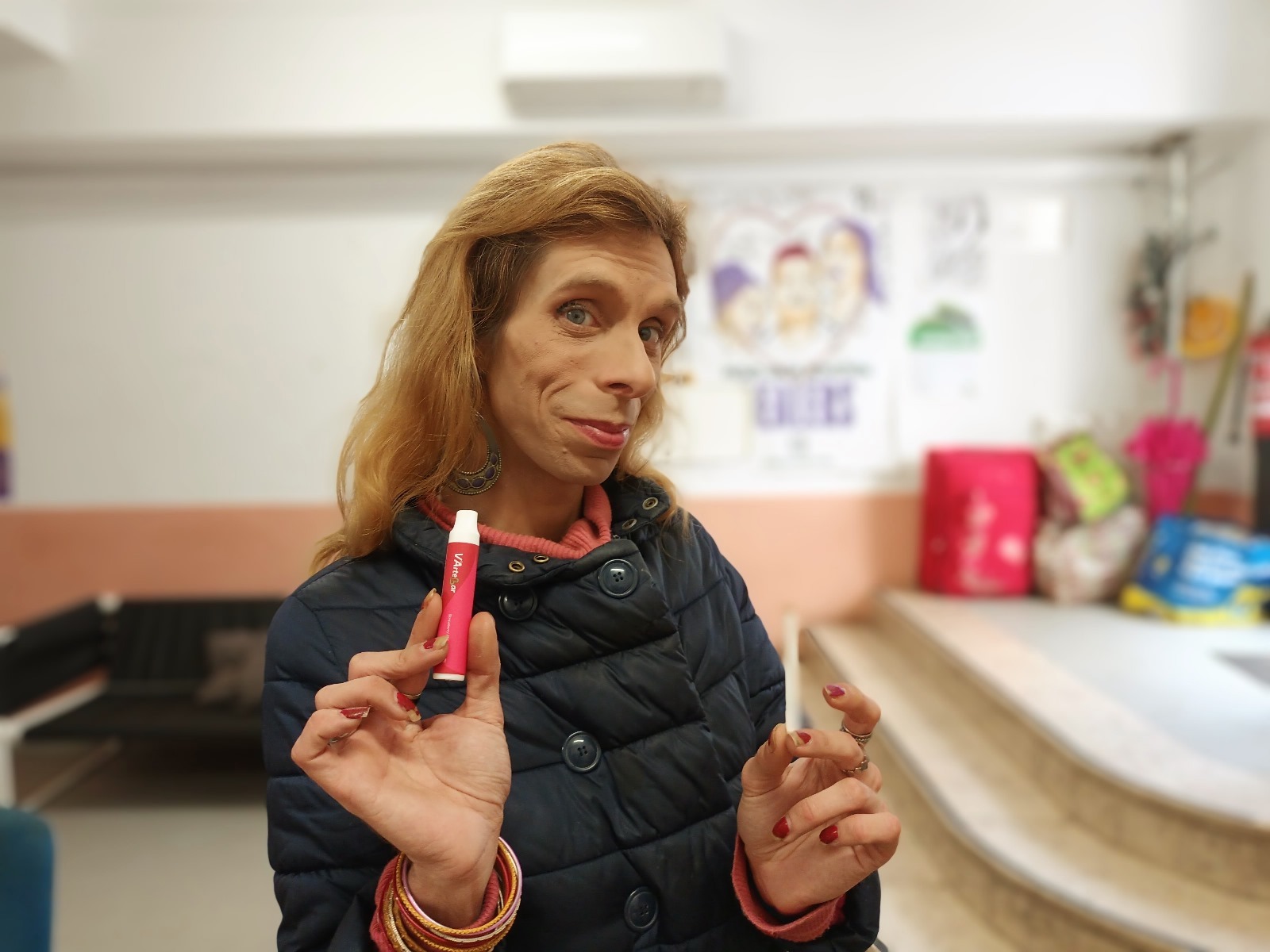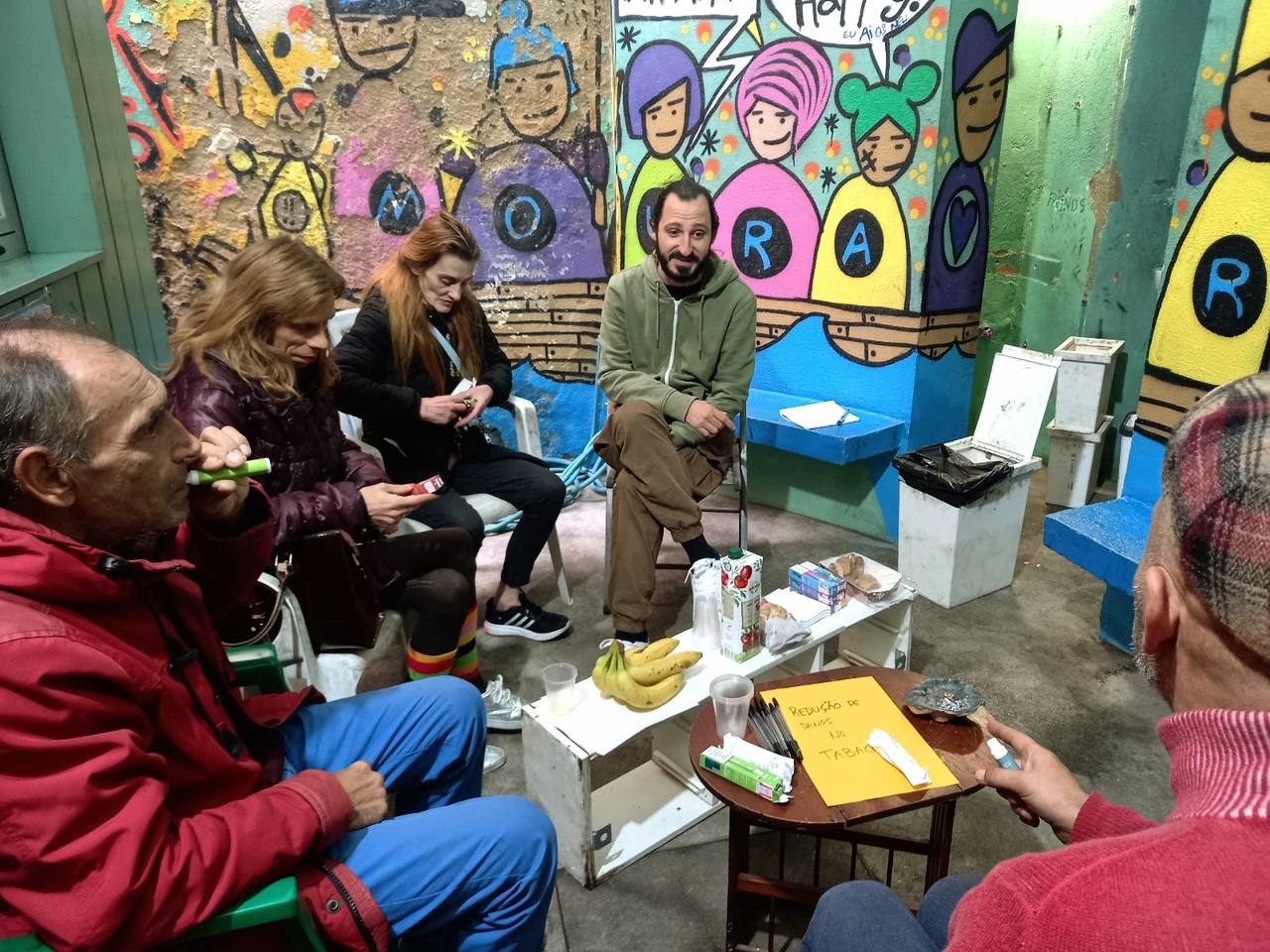When more people in harm reduction are considering how to integrate tobacco harm reduction into their work with people who use drugs, it’s important to learn from those who are already doing it.
Adriana Curado is a harm reductionist and community researcher with Grupo de Ativistas em Tratamentos (Group of Activists in Treatment) in Lisbon, Portugal. She was previously a coordinator of a mobile overdose prevention center there.
Curado knows that harm reduction should apply to smoking, which causes 12,000 annual deaths in Portugal, just as much as to other drug use. So in 2023, she organized and ran a project to create vaping groups—offering support, advice and products to help marginalized people who smoke.
“We recruited participants through harm reduction and housing first projects in Lisbon, with support from other organizations too.”
At the Lisbon Addictions conference in October, Curado will be presenting her findings: “Bridging Voices: a community initiative for tobacco harm reduction in Lisbon, Portugal.”
I asked her to tell Filter about the work and what was learned. Our interview has been edited for length and clarity.
Helen Redmond: Can you tell us about the vaping groups and why you started this?
Adriana Curado: My work has been with people who use drugs and those who are homeless, so it was a logical step to start there. Our idea was mainly to take a bottom-up approach. You can’t really think about a strategy or intervention without involving the people most affected by smoking. Being with people, introducing them to safer nicotine products so they can try them out, and then having conversations about how these products can fit into their daily lives—that’s what it’s all about.
We created two community groups that met weekly for an hour, with a small snack and a friendly atmosphere. One group was made up of women who use drugs, and the other included people who have experienced homelessness and are now part of housing first programs in Lisbon. We also had one participant who, due to mobility issues, had their vaping sessions at home. These meetings took place over four months at a harm reduction center. It was really interesting because some of the meetings happened in spaces normally used for illicit drug consumption, outside of their usual hours. So, we ended up having vaping sessions in a safe consumption room!
We recruited participants through harm reduction and housing first projects in Lisbon, with support from other organizations too. The meetings were very open: People would come, share their experiences with the products from the past week, get new products, and spend some time vaping and chatting. Sometimes we’d use music and poetry to explore perceptions and narratives around tobacco use and these new nicotine products. We held 33 group meetings and had 17 regular participants—nine in the women’s group, and eight in the housing first group.
We also tapped into the creativity of the groups! This was especially true in the women’s group because we had a facilitator with an artistic background. Some participants wrote Haiku poems and we even did short theatrical improvisations. We reminisced about the songs associated with our first cigarette, and it’s amazing to see how those memories stick with you over time. Most of the participants had been smoking for over 30 years but we were still able to recall those first experiences with tobacco and what they meant.
We took a trip back to a time when smoking was still seen as a sign of emancipation for women and when there was no social stigma around smoking. There’s been a huge social and cultural shift since then, which is positive in terms of greater awareness of the impacts of smoking, but it’s also brought about some negative consequences. There is a new kind of prohibitionism and efforts to ban lower-risk alternatives, leaving smokers with fewer viable options to quit. In the groups, we discussed all these changes and explored what these new products might mean for reducing risks.
HR: What kind of vaping products did you use, and how much did they cost?
AC: Our first experience was with disposable vapes—they’re easier to use, intuitive and the flavors are appealing. People really took to them, but for some, it wasn’t enough to satisfy their nicotine cravings or to replicate the experience of a conventional cigarette. Plus, because of the cost of disposable vapes, we couldn’t provide enough for people to use between meetings.
This created a lot of anticipation in the groups for the reusable vape because it offered more flexibility. You can choose nicotine strength, there’s a wider variety of flavors, and we could finally provide enough liquid to last a week.
Of course, using a reusable vape requires some training, and for that, we got help and support from the Portuguese Association of Vapers. Most participants preferred this option. We also tried a heated tobacco product, but only during the meetings, since we only had one device. None of the participants showed much interest in it, even though it’s pretty popular among smokers in Portugal.
“The financial aspect is really important when it comes to determining the choices of people with fewer resources.”
A pack of cigarettes costs around 5 euros, while a disposable vape costs between 8 and 10 euros. If you go for a reusable device, it can end up being much cheaper, costing around 2 euros a day. But there’s an initial investment in the device, which isn’t affordable for everyone. We actually did the math on this as part of our project so that we could help people manage their purchases independently. The financial aspect is really important when it comes to determining the choices of people with fewer resources.
Price is one obstacle, but so is accessibility. Reusable vapes are only sold in specialized stores, which makes sense because of the advice and support needed. However, the ban on buying any nicotine products online in Portugal creates geographic inequalities in access. A lot of people are left out.

Curado handing out vaping products. Photograph by Helen Redmond.
HR: What feedback did you get from participants?
AC: It’s really interesting to realize that most participants had little-to-no prior experience with safer nicotine products. There was no support available to help them quit smoking. These are people who frequently visit the hospital and use various health services related to drug use, yet nicotine is the forgotten substance! No one is addressing tobacco use and policies and the government is silent on the issue.
“Many participants use nicotine to cope with anxiety and stress. Participants told us that vapes were just as effective as cigarettes in this regard.”
I think there was a lot of curiosity and anticipation when participants started this project. We quickly realized that we needed to talk more about our experiences with nicotine, how we use it, in what situations and for what reasons. It’s also important to explore specific habits and how they might be connected to the use of other psychoactive substances.
What stood out the most was that many participants use nicotine to cope with anxiety and stress. Participants told us that vapes were just as effective [as cigarettes] in this regard, which is really significant but they made it clear that there are still moments when it’s hard to give up a regular cigarette—like the first cigarette after waking up, or after using crack.
There’s another aspect which might be considered as an important outcome. People living in material deprivation face the added anxiety of not having enough money to meet their nicotine needs, so they engage in risky behaviors like sharing cigarettes, picking up cigarette butts from the street, or breaking apart cigarette ends to roll them again. One thing the participants told us is that access to vapes has significantly changed this and allowed them to manage their nicotine cravings without resorting to those risky behaviors.
HR: What were the outcomes of the vaping groups?
AC: Almost all participants reduced their tobacco, use and two participants even managed to quit smoking entirely, switching to lower-risk products! This project was all about raising awareness aiming to introduce harm reduction strategies for tobacco use, especially by highlighting the experiences of people who are often overlooked by our tobacco policies.
In the groups, there were no pre-set goals or pressure to quit, cut down or switch to lower-risk products. Even so, almost all participants told us in their initial interviews that they wanted to do something to reduce or quit smoking, as many are feeling the toll that years of tobacco use have taken on their health. We left it up to each person to set their own goals and pace, with the group providing support. That’s why I can’t help but say the final results were surprising and beyond what we expected, given the short time-frame of the project.

Participant with vape. Photograph courtesy of Adriana Curado.
HR: What lessons have you taken away from facilitating these groups?
AC: The first and most important lesson is to recognize the immense desire people have to do something about their tobacco use. How often do we assume the opposite? We think because they have difficult lives, because they’re on the streets, because they have other health issues or use substances, they wouldn’t want to address their smoking. Why would they care about smoking, right?
This assumption is similar to many others we’ve seen in the history of harm reduction—like when some people thought it was impossible for those who use drugs to adopt safer practices, such as not sharing needles or seeking treatment for hepatitis C. So the first lesson from this project is that people do want to reduce or quit smoking and improve their health.
“Restrictive policies that take away options and rely on stigmatizing behaviors don’t work in public health.”
The second lesson is that we need to create the right conditions. People need access to reliable information, the ability to make choices, and a range of options offered in a non-judgmental way and across different settings. Right now, that’s not available.
The third lesson is about the power of participation—truly involving people who smoke. Restrictive policies that take away options and rely on stigmatizing behaviors don’t work in public health. The tobacco harm reduction movement is a consumer-driven movement. Without pressure from consumers, no significant progress would have been made.
HR: What does Portugal need to do to make safer nicotine products more available to people who smoke?
AC: The first step is we need data on the situation: who the most affected populations are and where they are, so we know where it’s urgent to intervene. Without that picture we’re making policies in a vacuum, with no serious commitment to reducing combustible tobacco use and its consequences. Twelve percent of deaths in Portugal can be directly attributed to tobacco. What might that percentage be among people who are homeless or those who use drugs?
The second step, which isn’t easy because there is an international establishment that ignores scientific developments and prefers to stir up fears about the tobacco industry, is to truly recognize the role of tobacco harm reduction as a public health strategy. We need more voices advocating in this direction, and for health care professionals to seriously get involved in this cause.
Lastly, we need to focus on working within the harm reduction strategies we already use for illicit substances, and include nicotine. Given the lack of public policies and funding in this area, we’ll need to get creative to grow the movement until we can no longer be ignored.
Top photograph of vaping group courtesy of Adriana Curado




